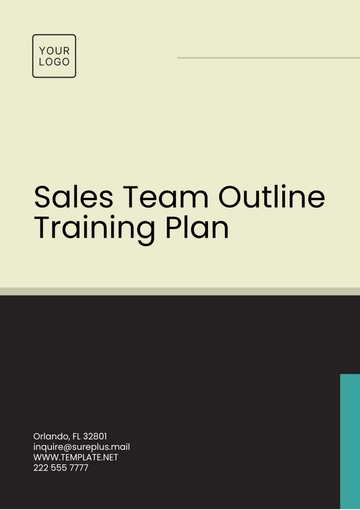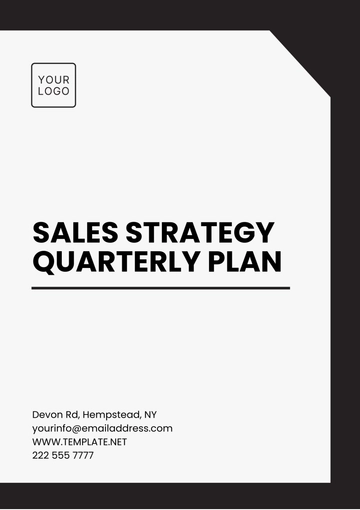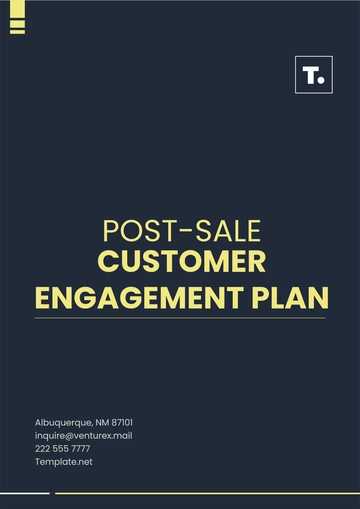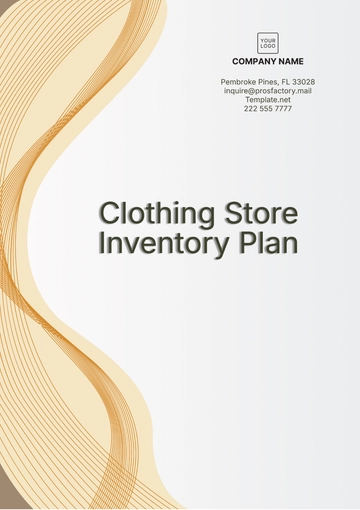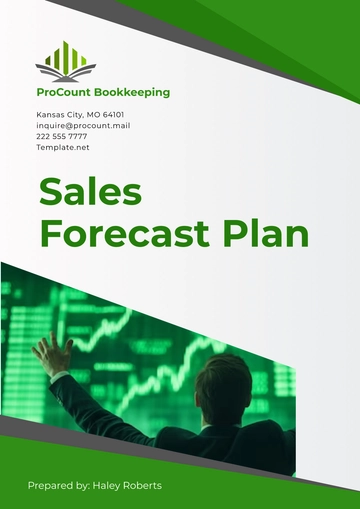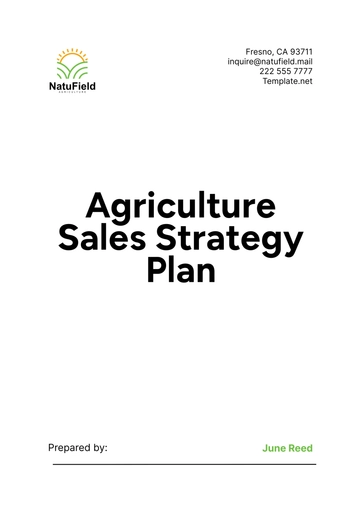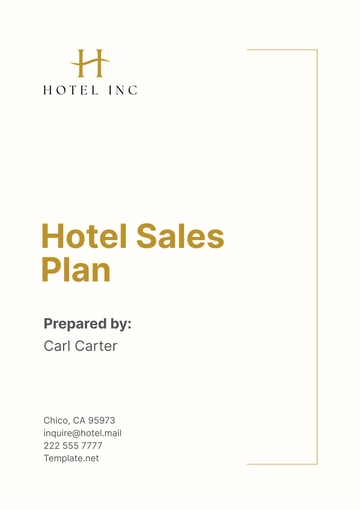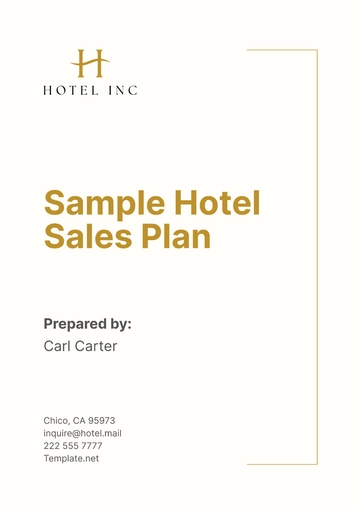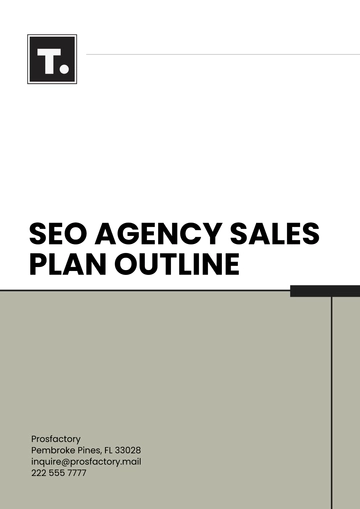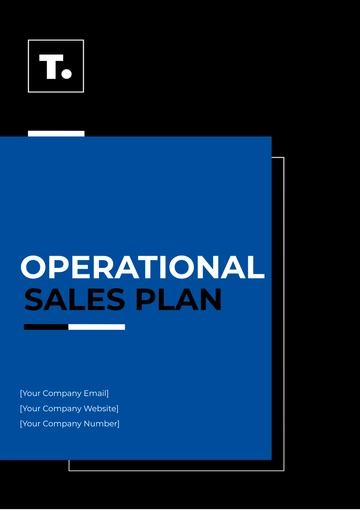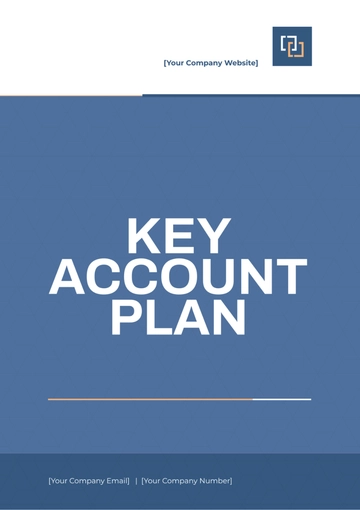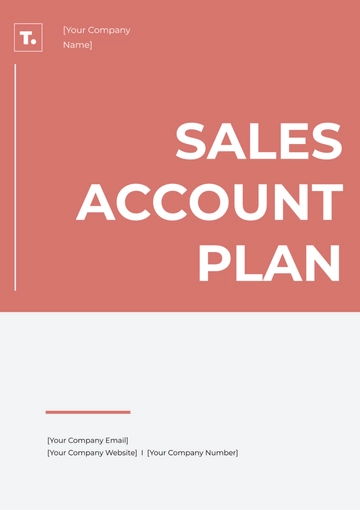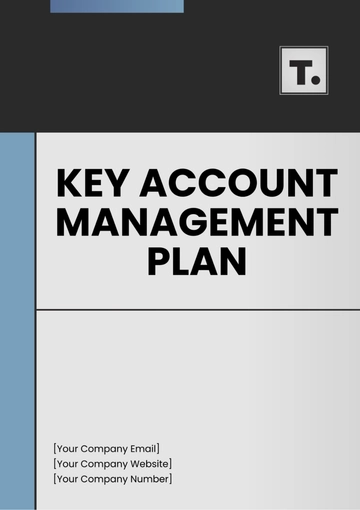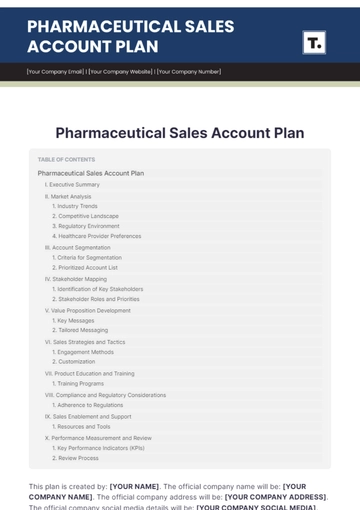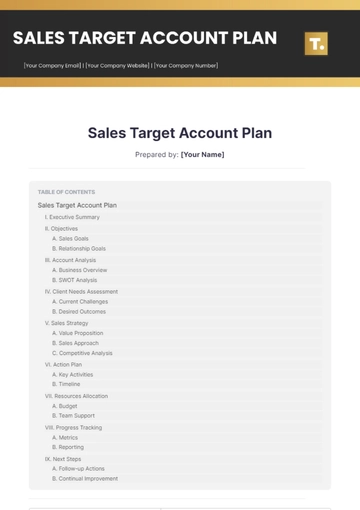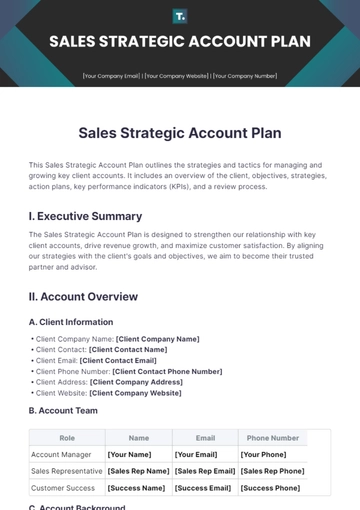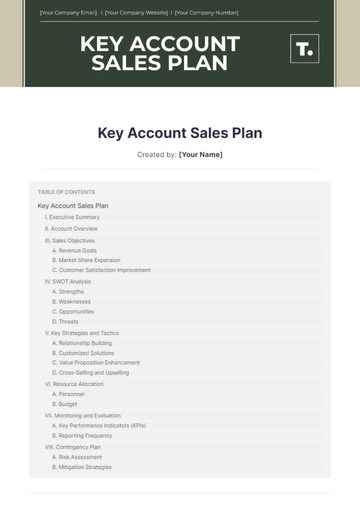Free Sales Plan for Post-Trade Show Lead Follow-Up
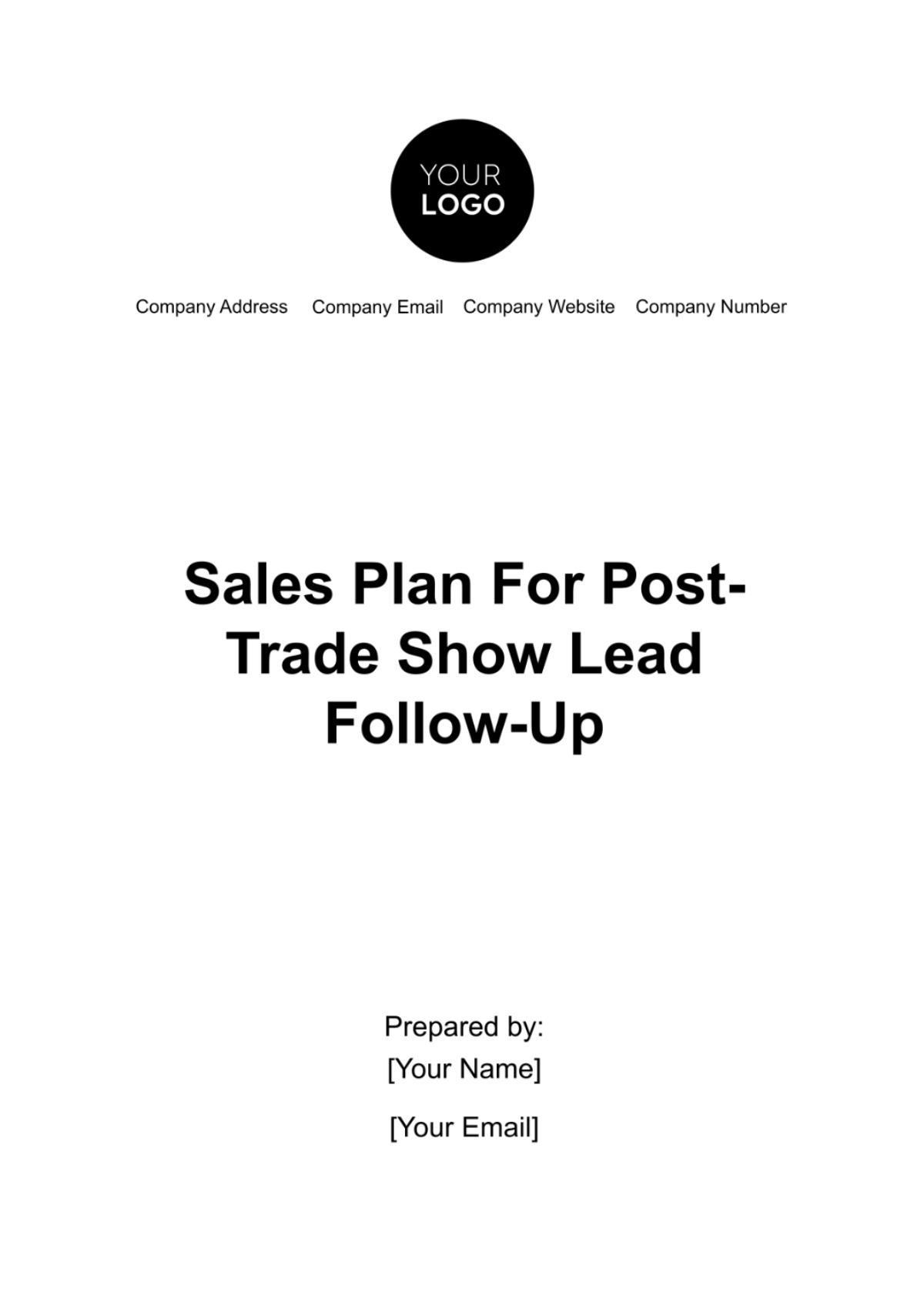
Lead Follow-Up
1. Executive Summary
In an era where every interaction counts, [Your Company Name] recognizes the pivotal role trade shows play in generating valuable leads. This document presents a comprehensive blueprint for an effective post-trade show follow-up strategy, designed to convert leads into engaged prospects and, ultimately, into loyal customers. Our approach is meticulous, timely, and personalized, addressing each lead's unique needs and potential. We delve into the nuances of lead prioritization, the strategic sequence of follow-ups, the selection of communication channels, the crafting of customized content, the nurturing of relationships, the meticulous tracking of progress, and the vital process of continuous improvement through feedback and analysis. By executing this plan, we not only aim to enhance our sales funnel but also to solidify [Your Company Name]'s position as a leader who values and understands the importance of every lead.
2. Understanding Lead Priority
In trade show marketing, the ability to swiftly and effectively prioritize leads stands as a cornerstone for successful follow-up strategies. Recognizing the varying levels of interest and potential among leads is crucial for allocating resources efficiently and maximizing conversion opportunities. The prioritization process ensures that leads with the highest likelihood of conversion receive the focus and urgency they deserve, enabling [Your Company Name] to foster relationships with potential high-value customers from the outset.
Table 1: Lead Prioritization Example
The table below offers a clear framework for categorizing leads based on their potential for conversion. It is a critical tool for streamlining follow-up processes and ensuring that efforts are concentrated where they are most likely to yield results. Each lead is assessed on key metrics such as company role, interest level, and the urgency of follow-up actions. This systematic approach ensures that high-priority leads are quickly identified and nurtured with the appropriate level of attention and resources.
Name | Company | Role | Interest Level | Follow Up Priority |
|---|---|---|---|---|
Jonathan Wilkins | XYZ Corporation | CEO | High | High |
This table serves as a foundational element in our lead follow-up strategy, enabling us to efficiently sort and prioritize leads for targeted follow-up efforts. By categorizing leads in this manner, we ensure that those with the highest potential for conversion are quickly engaged with personalized communication, tailored solutions, and strategic timing, laying the groundwork for a fruitful relationship.
The act of categorizing leads post-trade show is a nuanced process, demanding a deep understanding of each lead's potential business value. Factors such as the lead's position within their organization, the level of interest they have expressed, and the alignment of their needs with [Your Company Name]'s solutions play a critical role in determining follow-up priority. This strategic approach allows our sales team to focus their efforts on leads that are most likely to convert, ensuring a higher ROI on our trade show investments.
Following this methodology, leads classified as 'High Priority' are those who hold decision-making power within their organizations and have shown a strong interest in our offerings. These leads are contacted immediately, with personalized communication strategies designed to foster a connection, address their specific needs, and move them swiftly through the sales funnel. 'Medium' and 'Low Priority' leads are also important, as they represent potential future opportunities; these leads are nurtured with tailored content and regular check-ins to build awareness and preference for [Your Company Name] over time.
Through this document, [Your Company Name] sets forth a detailed and actionable plan for maximizing the potential of every lead generated from trade shows. By prioritizing leads effectively, we ensure that our follow-up efforts are concentrated, personalized, and optimized for conversion, ultimately contributing to our company's growth and success in the competitive marketplace.
3. Criteria for Prioritization:
Effective lead prioritization is critical for optimizing the follow-up process and maximizing conversion rates. Leads are categorized based on their interest level and potential for conversion, dictating the urgency and nature of follow-up efforts.
High Interest and Potential: These leads show a strong interest in [Your Company Name]'s offerings and have significant decision-making power or purchase intent. Immediate follow-up within 24-48 hours is crucial to capitalize on their interest and move them quickly through the sales funnel.
Medium Interest: Leads that display a moderate level of interest or potential benefit from [Your Company Name]'s solutions. Follow-up within one week allows for timely engagement that keeps [Your Company Name] top of mind, without appearing overly aggressive.
Low Interest: Leads with a passive interest or who are not currently in a buying cycle but could be potential customers in the future. A longer-term nurture sequence with a follow-up in one month and regular, monthly check-ins thereafter helps to gradually build interest and awareness.
4. Sequencing and Timing of Follow-ups
A well-defined sequence and timing of follow-ups ensure that leads are engaged with the right message at the right time, significantly increasing the chances of conversion.
High Priority Leads:
Initial contact: Within 1-2 days post-trade show to affirm the lead’s interest and introduce [Your Company Name]’s solutions.
Second follow-up: On Day 7 to address any queries and deepen engagement.
Third follow-up: On Day 14 to move towards closing the deal or scheduling a demo/meeting.
Medium Priority:
Initial contact: Between Days 3-5, allowing for a brief cooling-off period post-event before re-engaging.
Second follow-up: Between Days 10-15 to nurture the lead further and assess interest levels.
Low Priority:
Initial email: Within one month to keep [Your Company Name] on their radar.
Monthly check-ins: Thereafter to slowly build the relationship and convert when the time is right.
5. Channel of Communication
Selecting the appropriate channel for follow-up communications is pivotal in engaging leads effectively, respecting their preferences, and enhancing the likelihood of a positive response.
Email: Ideal for initial outreach, providing detailed product/service information, and sharing content that addresses the lead's interests or industry challenges.
Phone Calls: Best suited for high-priority leads, offering a personal touch that can quickly clarify needs, answer questions, and advance the sales process.
Face-to-Face Meetings: Effective for highly interested leads, allowing for a deeper connection and the opportunity to present [Your Company Name]’s value proposition in detail.
Social Media and Messaging Platforms: Useful for maintaining contact with leads over time, sharing relevant content, and engaging in a less formal, more continuous dialogue.
6. Follow-up Content
The content of each follow-up should be crafted to resonate with the lead, demonstrating an understanding of their needs and showcasing how [Your Company Name] can address them.
Personalization: Begin each communication with a personal touch by using the lead's name, referencing the trade show encounter, and recalling any specific discussions or points of interest.
Value Proposition: Clearly articulate how [Your Company Name]’s solutions address the lead’s specific challenges or goals, providing concrete examples or case studies where possible.
Call to Action: Each follow-up should include a clear, actionable step for the lead to take, whether it's scheduling a call, requesting a demo, or downloading additional resources. This moves the conversation forward and encourages deeper engagement.
7. Fostering Relationships
Transforming leads into loyal customers requires more than just effective follow-ups; it necessitates building meaningful relationships based on trust, value, and understanding.
Understanding Needs: Show genuine interest in the lead’s challenges and goals. Ask probing questions to uncover deeper insights, demonstrating a commitment to providing solutions that truly meet their needs.
Providing Value: Regularly share insightful content, such as industry reports, case studies, or articles, that can help the lead overcome challenges or achieve goals. This positions [Your Company Name] as a valuable resource and trusted advisor.
Trust Building: Be consistent in follow-up efforts, keep promises (such as sending information or making introductions), and maintain transparency in all communications. Trust is the foundation of any long-term business relationship.
By implementing these strategies, [Your Company Name] will not only improve the efficiency and effectiveness of its post-trade show follow-ups but also build lasting relationships that drive business growth and customer loyalty.
8. Tracking Progress
The effectiveness of [Your Company Name]'s post-trade show follow-up strategy is significantly enhanced by the meticulous tracking of every interaction with leads. This not only ensures a personalized and consistent engagement with each lead but also facilitates the evaluation of the follow-up process's effectiveness over time. Utilizing Customer Relationship Management (CRM) tools such as Salesforce, HubSpot, and Zoho CRM is pivotal in achieving this level of organization and insight.
Key Elements to Track:
Contact Details and Preferences: Record each lead’s contact information along with their preferred channels of communication. This ensures follow-ups are conducted through the most receptive medium, increasing engagement chances.
Summary of Each Interaction: Detailed notes from every touchpoint, including phone calls, emails, meetings, and social media interactions, should be logged. This historical context enables sales representatives to tailor subsequent communications and build deeper connections.
Follow-up Actions and Dates: Schedule and track all follow-up actions, ensuring that no lead is neglected. This includes reminders for future communication, tasks for sending additional information, or scheduling meetings.
Implementing a structured system for tracking these elements allows [Your Company Name] to streamline the follow-up process, ensuring that each lead is engaged with personalized, timely, and relevant content. It also aids in identifying bottlenecks or inefficiencies within the sales pipeline, allowing for real-time adjustments.
9. Continuous Learning
Adapting and refining the follow-up strategy based on data-driven insights is crucial for maximizing the return on trade show investments. Continuous learning involves a cyclical process of executing the strategy, collecting and analyzing data, and making informed adjustments.
Evaluation Metrics:
Conversion Rates: By analyzing the percentage of leads that convert into customers, [Your Company Name] can gauge the overall effectiveness of its follow-up strategy and identify areas for improvement.
Lead Feedback: Gathering feedback directly from leads provides invaluable insights into their perception of [Your Company Name]’s communication approach, the relevance of the information provided, and overall satisfaction with the interaction.
Sales Team Input: The sales team’s observations and experiences are critical for understanding the practical challenges and opportunities in the follow-up process. Their feedback can highlight inefficiencies, suggest improvements, and identify successful tactics worth replicating.
Through this continuous learning loop, [Your Company Name] can identify patterns in lead behavior, preferences, and feedback that inform strategic adjustments. This may involve refining the messaging, optimizing follow-up timings, or altering the channel mix, all with the aim of improving lead engagement and conversion rates.
10. Conclusion
[Your Company Name]'s post-trade show follow-up plan is a meticulously crafted strategy aimed at transforming trade show leads into engaged prospects and, ultimately, into loyal customers. Through the diligent tracking of lead interactions via CRM tools, the company ensures that no opportunity is missed, and every lead is given the personalized attention necessary for successful conversion. The commitment to continuous learning, powered by the analysis of conversion rates, lead feedback, and sales team insights, allows for the constant refinement of the follow-up process. This adaptive approach ensures that [Your Company Name] remains agile and responsive to both market trends and lead expectations, solidifying its position as a leader in customer engagement and conversion post-trade show. By adhering to this comprehensive strategy, [Your Company Name] not only maximizes its trade show investments but also fosters long-term relationships that contribute to sustained business growth and success.
11. Appendices
Workflow Maps: Visual guides for the follow-up process, tailored to lead priority levels.
Lead Profiling Templates: Tools for recording key information about each lead.
Trade Show Attendance Data: Analysis of lead generation performance by trade show.
Sales Conversion Rates: Metrics and analysis on the effectiveness of follow-up strategies.
12. Contact Information
Address: [Your Company Address]
Phone: [Your Company Number]
Email: [Your Company Email]
Sales Lead: [Name of the Person Responsible for Sales Follow-ups]
By implementing this plan, [Your Company Name] aims to maximize the potential of every trade show lead, driving sales and fostering lasting customer relationships.
- 100% Customizable, free editor
- Access 1 Million+ Templates, photo’s & graphics
- Download or share as a template
- Click and replace photos, graphics, text, backgrounds
- Resize, crop, AI write & more
- Access advanced editor
The Sales Plan For Post-Trade Show Lead Follow-Up Template by Template.net is a meticulously crafted resource designed to streamline and enhance the post-trade show lead management process. This comprehensive template offers a structured framework, ensuring that businesses can efficiently and systematically engage with potential clients, ultimately optimizing their conversion rates and post-event ROI. Edit and customize this template with our AI editor tool and download in minutes.
You may also like
- Finance Plan
- Construction Plan
- Sales Plan
- Development Plan
- Career Plan
- Budget Plan
- HR Plan
- Education Plan
- Transition Plan
- Work Plan
- Training Plan
- Communication Plan
- Operation Plan
- Health And Safety Plan
- Strategy Plan
- Professional Development Plan
- Advertising Plan
- Risk Management Plan
- Restaurant Plan
- School Plan
- Nursing Home Patient Care Plan
- Nursing Care Plan
- Plan Event
- Startup Plan
- Social Media Plan
- Staffing Plan
- Annual Plan
- Content Plan
- Payment Plan
- Implementation Plan
- Hotel Plan
- Workout Plan
- Accounting Plan
- Campaign Plan
- Essay Plan
- 30 60 90 Day Plan
- Research Plan
- Recruitment Plan
- 90 Day Plan
- Quarterly Plan
- Emergency Plan
- 5 Year Plan
- Gym Plan
- Personal Plan
- IT and Software Plan
- Treatment Plan
- Real Estate Plan
- Law Firm Plan
- Healthcare Plan
- Improvement Plan
- Media Plan
- 5 Year Business Plan
- Learning Plan
- Marketing Campaign Plan
- Travel Agency Plan
- Cleaning Services Plan
- Interior Design Plan
- Performance Plan
- PR Plan
- Birth Plan
- Life Plan
- SEO Plan
- Disaster Recovery Plan
- Continuity Plan
- Launch Plan
- Legal Plan
- Behavior Plan
- Performance Improvement Plan
- Salon Plan
- Security Plan
- Security Management Plan
- Employee Development Plan
- Quality Plan
- Service Improvement Plan
- Growth Plan
- Incident Response Plan
- Basketball Plan
- Emergency Action Plan
- Product Launch Plan
- Spa Plan
- Employee Training Plan
- Data Analysis Plan
- Employee Action Plan
- Territory Plan
- Audit Plan
- Classroom Plan
- Activity Plan
- Parenting Plan
- Care Plan
- Project Execution Plan
- Exercise Plan
- Internship Plan
- Software Development Plan
- Continuous Improvement Plan
- Leave Plan
- 90 Day Sales Plan
- Advertising Agency Plan
- Employee Transition Plan
- Smart Action Plan
- Workplace Safety Plan
- Behavior Change Plan
- Contingency Plan
- Continuity of Operations Plan
- Health Plan
- Quality Control Plan
- Self Plan
- Sports Development Plan
- Change Management Plan
- Ecommerce Plan
- Personal Financial Plan
- Process Improvement Plan
- 30-60-90 Day Sales Plan
- Crisis Management Plan
- Engagement Plan
- Execution Plan
- Pandemic Plan
- Quality Assurance Plan
- Service Continuity Plan
- Agile Project Plan
- Fundraising Plan
- Job Transition Plan
- Asset Maintenance Plan
- Maintenance Plan
- Software Test Plan
- Staff Training and Development Plan
- 3 Year Plan
- Brand Activation Plan
- Release Plan
- Resource Plan
- Risk Mitigation Plan
- Teacher Plan
- 30 60 90 Day Plan for New Manager
- Food Safety Plan
- Food Truck Plan
- Hiring Plan
- Quality Management Plan
- Wellness Plan
- Behavior Intervention Plan
- Bonus Plan
- Investment Plan
- Maternity Leave Plan
- Pandemic Response Plan
- Succession Planning
- Coaching Plan
- Configuration Management Plan
- Remote Work Plan
- Self Care Plan
- Teaching Plan
- 100-Day Plan
- HACCP Plan
- Student Plan
- Sustainability Plan
- 30 60 90 Day Plan for Interview
- Access Plan
- Site Specific Safety Plan



